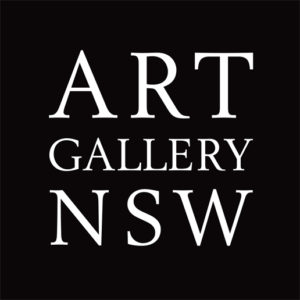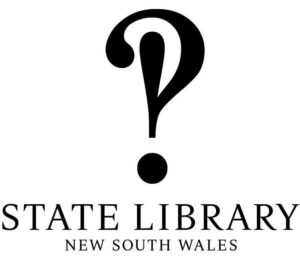
Paper Tigers Exhibition: On view now at NAS Gallery
PAPER TIGERS: POSTERS FROM SYDNEY’S LONG ’70S
EXHIBITION DATES: Friday 30 August — Saturday 12 October 2019
OPENING NIGHT: Thursday 29 August, 6–9pm
OPENING HOURS: Monday–Saturday, 11am–5pm
CURATORS: Lesa-Belle Furhagen and Toby Creswell
The National Art School Gallery in conjunction with Sedition: a festival of art, music and pictures presents Paper Tigers an exhibition of the 1970s celebrating Sydney’s dynamic poster art and public protest movements, from the late 1960s through the ’70s to the early ’80s.
Paper Tigers celebrates Sydney’s printed visual culture, including posters, prints and ephemera from a range of both celebrated and anonymous artists and designers, the exhibition presents a snapshot of a period when vibrant and experimental creative production incited social action.
Lesa-Belle Furhagen and Toby Creswell are the co-creators and curators of Sedition: a festival of art, music and pictures. The pair are also co-curating the festival’s centrepiece, Paper Tigers, an exhibition of posters and public art from Sydney’s fertile and feral counter-culture scene in the 1970s, at the National Art School Gallery.
With much of the creativity of that time centred around Darlinghurst, the NAS Gallery is an appropriate venue for the show which will present more than 200 artworks including posters, album covers and photographs of the time, films and ephemera of the era..
The vibrant public program includes talks, workshops and live music events in the National Art School’s historic Cell Block Theatre, also a hotspot for performance, music and art school balls in the 1970s. It was here on August 16, 1977, the night Elvis died, that a lairy bunch of art school students had their first gig as Mental as Anything. The band’s guitarist Chris O’Doherty, aka Reg Mombassa, went on to have a successful dual career as musician and artist, and a number of works in Paper Tigers come from his personal collection.
Lesa-Belle and Toby, who worked together on a series of iconic magazines including Rolling Stone, Juice and HQ, chat below about Paper Tigers.

Toby The guts of the idea behind the festival was getting up and being active and making something happen. The 70s was the time when Australia’s cultural cringe was disappearing, women’s liberation was on the rise, and gay liberation. There was no social media or access to other media so people who were doing things on the edge had to resort to squeegeeing up their manifesto and sticking it on a wall.
Lesa-Belle But we don’t want Paper Tigers to be an exercise in nostalgia, we want to take up the issues that were top of mind then that are still relevant today, the whole #metoo thing, where feminism is, issues around domestic violence, a woman’s right to choose – these are still very front and centre today.
Toby The ’70s protest art also had a strong anti-war theme. These things have not gone away, so it’s a not-so-distant mirror to what’s happening now.
Lesa-Belle It was an important time in Sydney’s cultural legacy and one of the reasons for honouring it is Sydney has a thing where it moves onto the next thing, it tends not to honour its past. But at that moment in time, that upheaval produced some incredible works, not just visual art but in music, theatre and film. The Sedition festival more broadly is an acknowledgment of the intersection of all those different cultural mediums at that time.
Where have the artworks come from?
Lesa-Belle Mainly from the artists themselves. That’s been a really interesting part of the journey because we’ve got to meet the makers and get their take on the time. Many were graduates of the art school, like Paul Worstead, who has these most wonderful fanzines held in the National Art School archive. There are works that haven’t been seen before, so it’s not just another poster exhibition. Getting the artists to pull out their works they have held onto, and the stories that went along with those works have really helped craft the show.
Did Sydney’s creativity differ to other Australian cities?
Toby I think there is a Sydney style, I don’t know how to express it – pretty hard-edged with a black humour to it when you look at the people who have come out of here. It’s not very whimsical, it’s very tough-minded and lean.
Why were the 1970s such a creative time?
Lesa-Belle At that time economically, Sydney was pretty depressed, there was a recession on, a lot of people were on the dole, but they used that money to create some amazing work and some amazing happenings. We want to really bring that back to life, not just as an acknowledgement of the legacy but to inspire contemporary artists, musicians, theatre and film makers.
Toby There’s a great poster that Marie McMahon did of St Mary’s Cathedral with all these flames coming out of the windows and two women in front of it, and it says, ‘Keep warm this winter, make trouble.’
How has public protest changed?
Lesa-Belle I don’t think it’s gone, you look at the climate change rallies and the lock out rallies, there is still agitation out there, people still want to be heard. I don’t think we all have to accept that social media echo chamber, we still have a voice and in some ways we live in incredibly revolutionary times. If ever there was a time to arc up, I think it’s now.
Do you have personal connections to the show?
Toby Some posters are for events my punk rock group was involved with, but also we know a lot of the artists from around the place and working in the arts for all this time. Johnny Allen, the original organiser of the Aquarius Festival in Nimbin, ran the Paris Cinema and cabaret shows in Sydney. He’s putting together a cabaret season for the Sedition festival.
Any connections to the National Art School?
Lesa-Belle I have always lived here and the National Art School is like the heartbeat of this area. My daughter and I have done summer school here, it’s not just an institution of learning, it’s a very open place, where gigs are still happening and conversations about art. There’s not so many places like that left in Sydney.
Toby One of the artists in Paper Tigers, Jan Fieldsend, did a map of Sydney in the 1970s, which is a great rough diagram of where people hung out, and the National Art School is at the centre of that.
Presented by

In conjunction with

Supported by
![]()
![]()
Supporters




